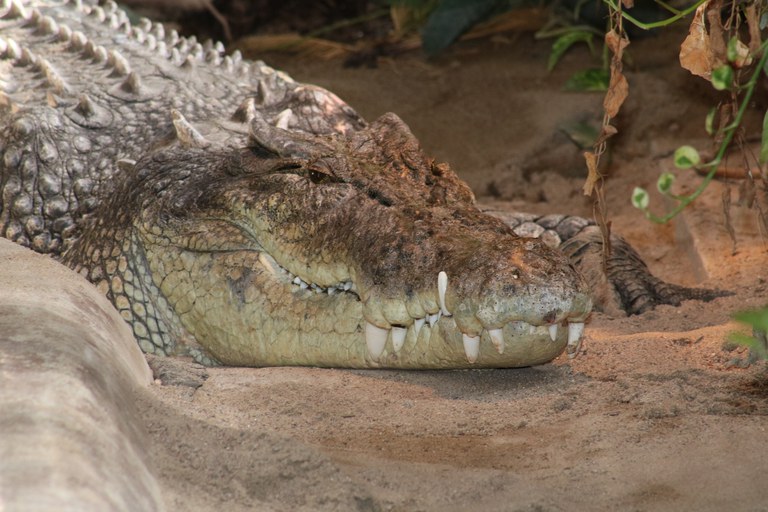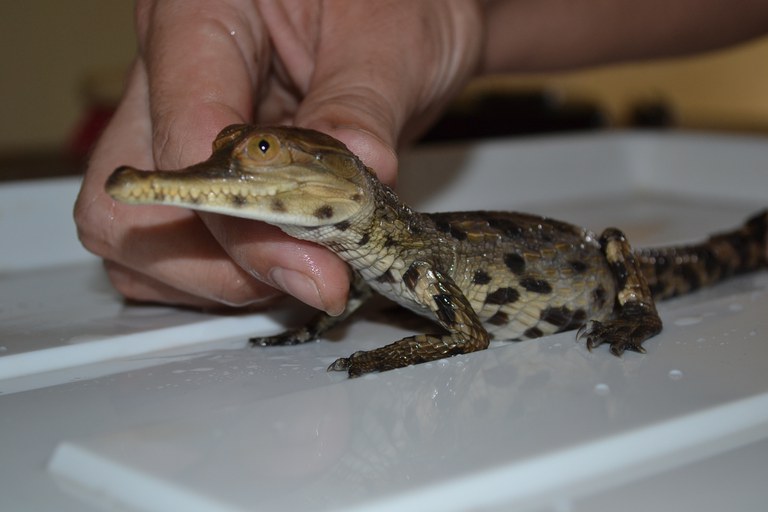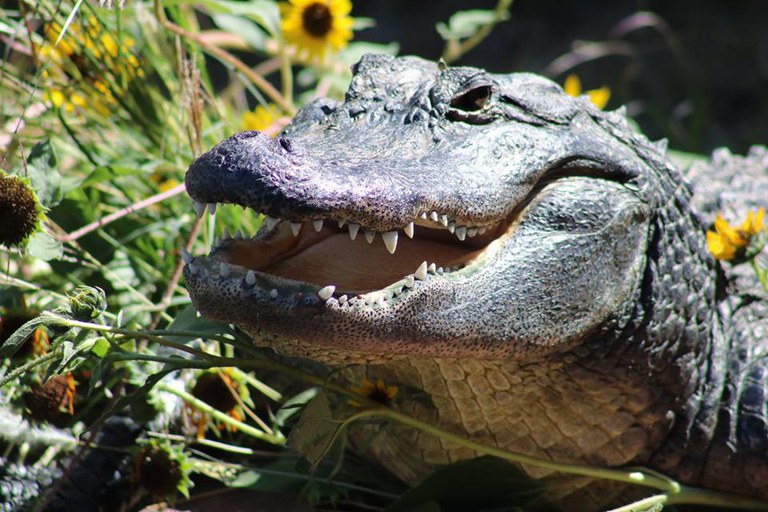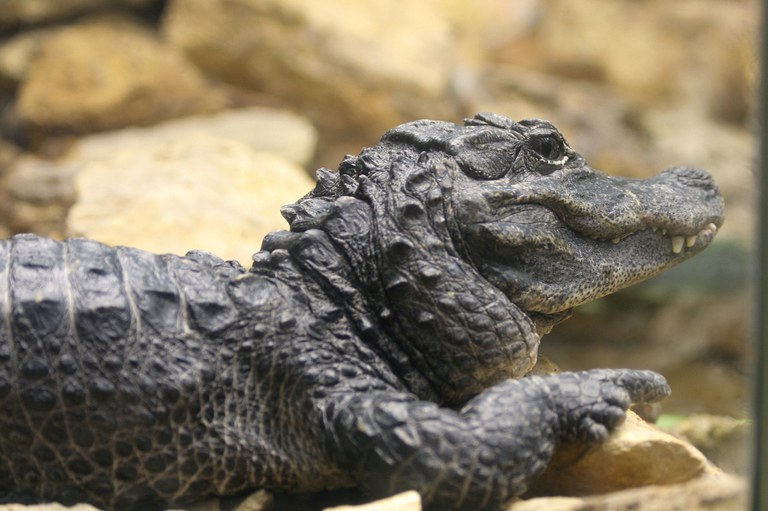ABQ BioPark’s Crocodiles (and Gators) Rock!
9/28/2016 - The ABQ BioPark is home to four species of crocodilians with origins across the globe—the American and Chinese alligator, and the West African slender-snouted and saltwater crocodile. Get a closer look at these cold-blooded zoo residents below.
Saltwater Crocodile

Reigning from Indonesia and Australia, the saltwater crocodile is the world’s largest croc. Weighing in at 1,200 pounds, the ABQ BioPark’s saltwater crocodile, John, isn’t a glutton, though. His species can get by on just 100 pounds of meat a year. This may sound unbelievable, but John—and his reptilian relatives—can thank their ectothermic (cold-blooded) physiology for this. Ectothermic creatures take on the temperature of their surroundings and can convert much more of their food into body mass compared to warm-blooded animals. Although John can go for extended periods without a meal, zookeepers feed him a diet of rodents in small weekly portions.
West African Slender-Snouted Crocodile

Next to John in the crocodile exhibit is a female West African slender-snouted crocodile. This critically endangered species, native to West Africa, is primarily fish eating—that’s where their long, slender snouts come in handy.
Several ABQ BioPark staff recently visited the Zoo Nationale d'Abidjan in Cote d'Ivoire, located in West Africa, to continue the zoo's multi-year conservation partnership to help save the West African slender-snouted crocodile. In the project's third year, staff built on previous success by giving health exams and fixing water filtration issues. Staff also brought 50 pounds of "croc chow" and two new incubators to the zoo. The chow will help young crocs get the nutrition they need, while the incubators, both set at different temperatures, will help zookeepers manage sex of hatchlings. The 2014 hatchlings may be ready for a wild release in the next year.
American Alligator

The ABQ BioPark has 14 American alligators—four 6-8-year-old juveniles who live inside a small pool in the crocodile building, and 10 females in Gator Swamp. The juvenile alligators were confiscated by authorities because they were illegally imported into New Mexico.
Gator Swamp's females live as a community and largely get along. On a sunny day, you may find them floating in the pool, with their backs exposed, soaking up the sun to collect warmth. If one of them gets overheated, they can drop to the bottom of the pool to cool off. In the winter, the ABQ BioPark’s crocodile and alligator pools are heated to keep these crocodilians warm. The species also warms up by using the scales on its back to effectively radiate heat across its body.
The American alligator, endemic to the Southeastern United States, was hunted to near extinction. Through effective conservation efforts, today it is listed as a species of least concern by the International Union for the Conservation of Nature.
Chinese Alligator

The ABQ BioPark’s male and female Chinese alligators live inside the Reptile House. There are fewer than 200 of these critically endangered crocodilians in the wild. The two are markedly smaller than their American counterparts.
Unlike the American alligator, the Chinese alligator possesses scales all over its body, including the belly—a feature of only a few crocodilians.
Fast facts:
- An American alligator’s tongue is attached all the way around its mouth. This helps the alligator avoid biting its own tongue off when snapping for prey.
- The scales on an alligator's back act as radiated heating and also help protect them.
- Crocodiles have dozens of teeth but don’t chew their food before swallowing. They prefer to swallow in large chunks.
- Although they may look similar, crocodiles and alligators are two different reptiles. The easiest way to tell crocodiles and alligators apart is to look to the nose. Alligators possess a wide "U"-shaped, rounded snout, while crocs have longer and more pointed "V"-shaped noses.

